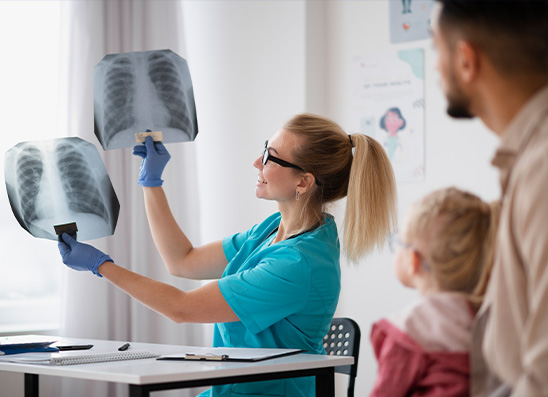Chronic Obstructive Pulmonary Disease (COPD) is primarily caused by long-term exposure to harmful substances that damage the airways and lung tissue.
What causes COPD?
Tobacco smoke is the leading cause, with smoking significantly increasing the risk of developing COPD. Additionally, air pollution, both indoor and outdoor, contributes to the disease, as exposure to dust, chemicals, and fumes can harm lung health. Occupational exposures, such as working with harmful substances like asbestos or coal dust, further elevate the risk of COPD. Frequent respiratory infections during childhood can also impair lung development, increasing susceptibility to the disease later in life. Genetic factors, such as Alpha-1 Antitrypsin Deficiency, a genetic disorder, may lead to early onset COPD. Age is another critical factor, as the disease is more prevalent in individuals over 40, due to the natural decline in lung function as one age.
What are the symptoms that develop due to COPD?
Symptoms of COPD include a persistent chronic cough that may produce mucus, shortness of breath, especially during physical activity, and wheezing, which manifests as a whistling or squeaky sound while breathing. Individuals may experience chest tightness, characterized by pressure or discomfort in the chest, along with increased susceptibility to frequent respiratory infections, leading to tiredness and general fatigue. In severe cases, cyanosis, which is a bluish tint to the lips or fingernails due to low oxygen levels, may occur.
What is the treatment?
Treatment options for COPD typically include a combination of medications and lifestyle changes. Bronchodilators help relax the muscles around the airways, improving airflow, while inhaled or oral steroids can reduce inflammation in the airways. Antibiotics may be prescribed during acute exacerbations or infections. Pulmonary rehabilitation, a structured program that combines education, exercise, and support, is essential for helping patients manage their symptoms and improve their quality of life. For patients with low blood oxygen levels, supplemental oxygen therapy can significantly enhance breathing and overall well-being.
Lifestyle changes, such as quitting smoking, avoiding air pollutants, and maintaining a healthy diet and exercise regimen, play a vital role in managing COPD progression. In severe cases, surgical options like lung volume reduction surgery or lung transplants may be considered. Staying up to date with vaccinations for flu and pneumonia is also important to prevent respiratory infections that could worsen COPD symptoms.
By understanding the causes of COPD, recognizing its symptoms, and adhering to a comprehensive treatment plan, individuals can effectively manage their condition and enhance their quality of life. If you suspect you have COPD or are experiencing any symptoms, it’s essential to consult a healthcare professional for a thorough evaluation and personalized care plan at ILIP.
